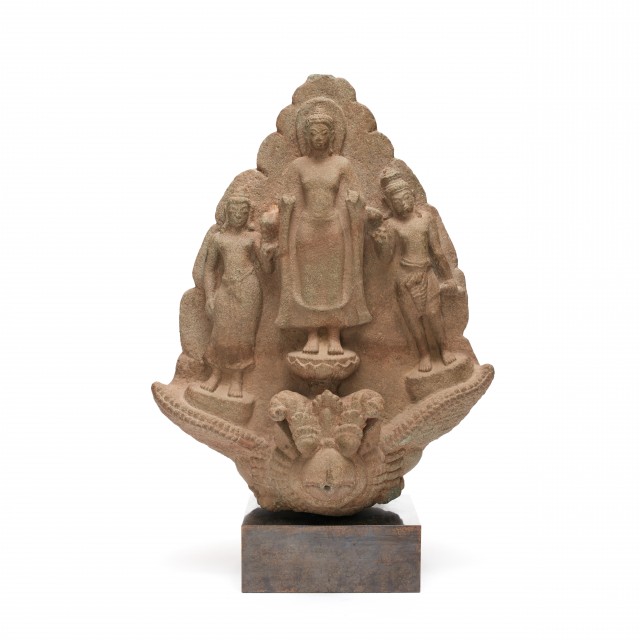Buddha and Two Attendants

Photography by Synthescape, Digital image © Asia Society
Buddha and Two Attendants
8th century
Thailand
Sandstone
H. 16 5/8 x W. 13 x D. 5 3/4 in. (H. 42.2 cm)
Asia Society, New York: Mr. and Mrs. John D. Rockefeller 3rd Collection, 1979.77
Provenance
John D. Rockefeller 3rd, New York, NY; acquired from Spink & Son Ltd., London, 1972.
The Asia Society, New York, NY, bequest of John D. Rockefeller 3rd, New York, NY, 1979.
Licensing inquiries
This sculpture of a Buddha flanked by two attendants and standing on a mythical beast usually seen in Hindu art has defied scholarly explanation. This particular configuration, of which there are a number of extant examples from Thailand dating from the 7th to 10th century, has no Indian precedent. It is not known whether it is the result of a mistake, a reinterpretation, or a completely new conception reflecting local beliefs. The Buddha can be distinguished from the two bodhisattvas who flank him by his dress and hairstyle. The Buddha has hair in snail shell-shaped curls and wears the traditional garments of a monk: two large rectangular pieces of cloth, one wrapped around his waist and the other draped over the shoulders. The two layers can be seen where the hemlines fall at different levels. The bodhisattvas, Avalokiteshvara to the left and Vajrapani to the right, have bare chests, more elaborate coiffures and wear jewelry.

